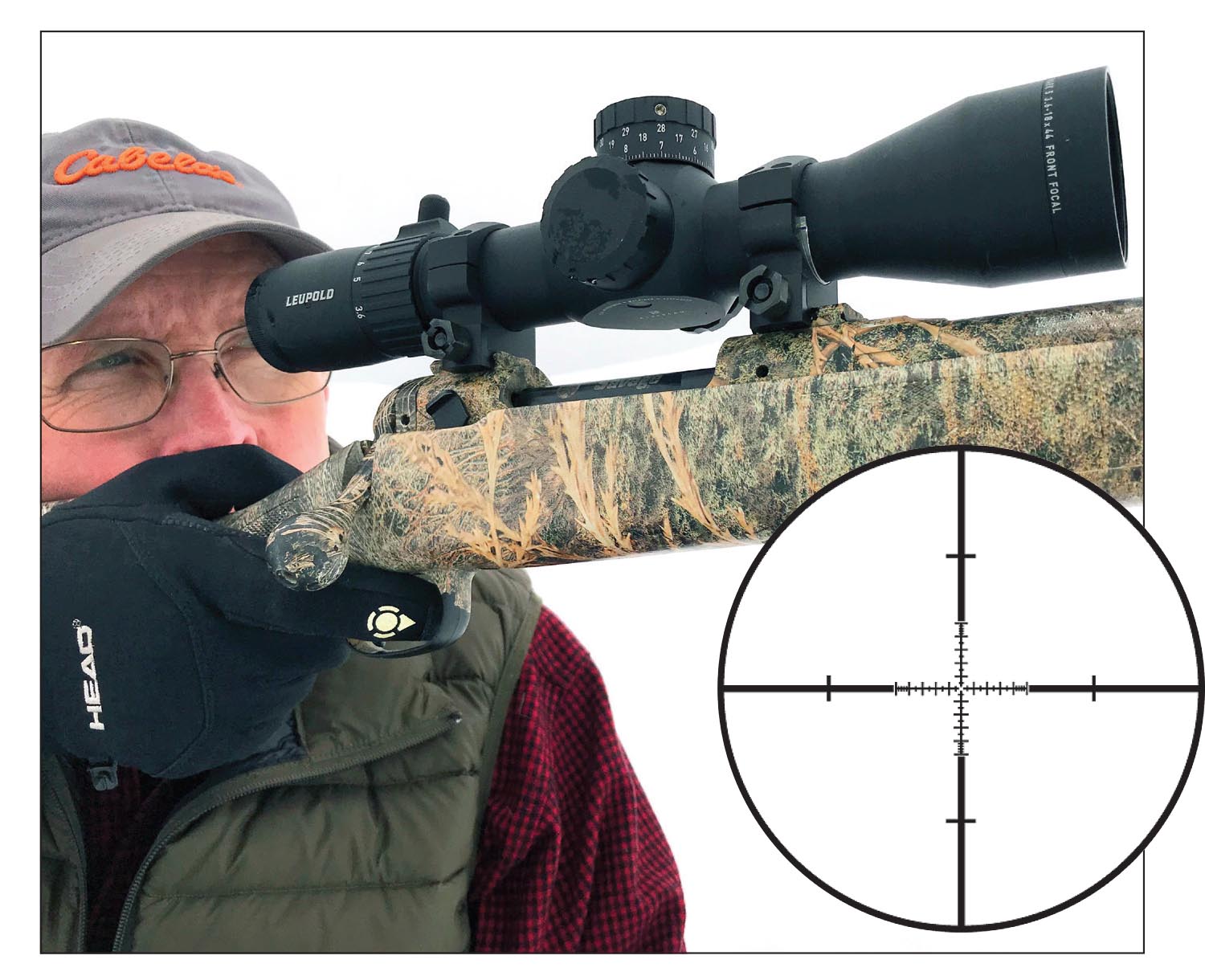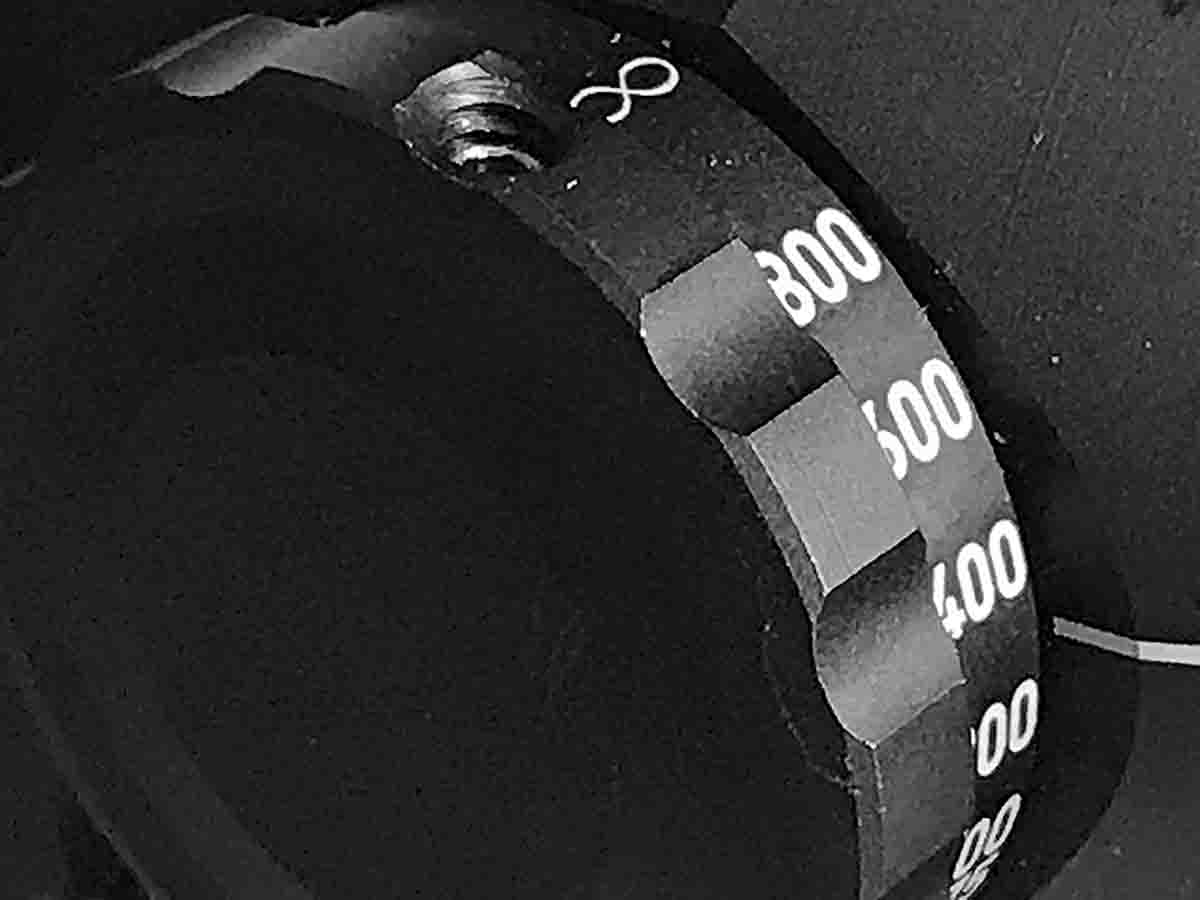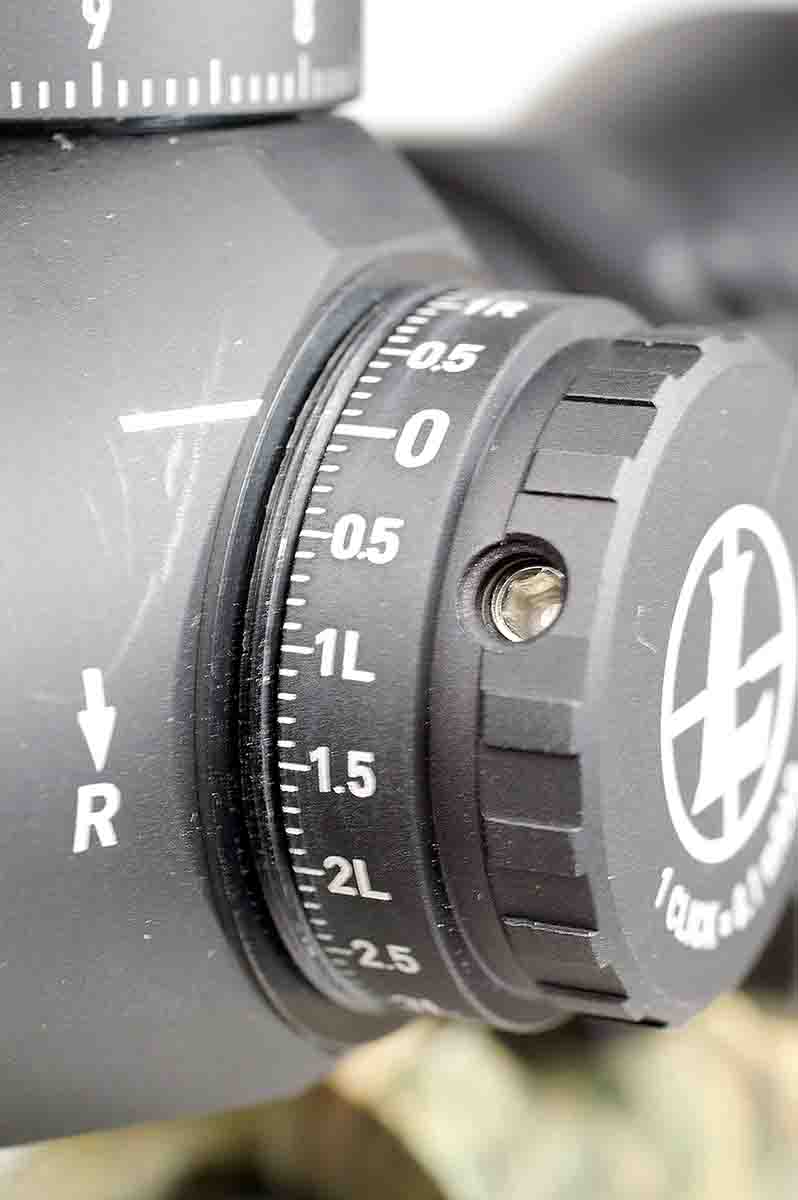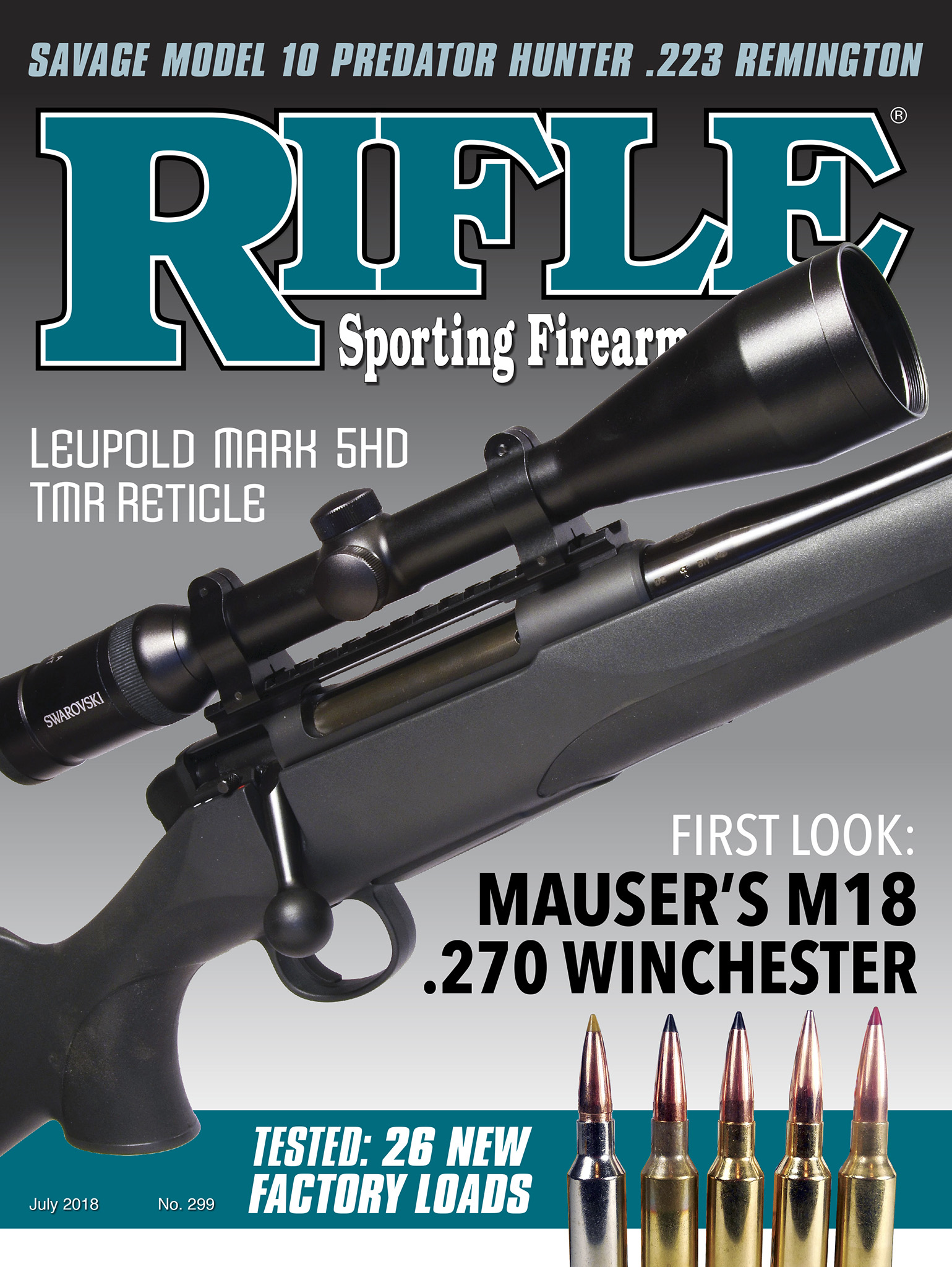A Rifleman's Optics
Leupold Mark 5HD 3.6-18x 44mm with TMR Reticle
column By: John Haviland | July, 18
Scopes seem to always increase in size. However, Leupold turned to a compact with its new Mark 5HD 3.6-18x 44mm scope. It weighs 26 ounces and measures a short 12 inches. All manner of features are included in the scope.

The adjustment dial, with three revolutions of elevation adjustment, is the most obvious new feature. The elevation dial contains a lock release button located on the top side of the dial. The dial locks in the zero position but can be unlocked by pushing the button and turning the dial one or more clicks to raise elevation. The dial can also be turned five clicks below zero to sight in at a shorter distance. To indicate where the rotation of the dial is set, the button remains extended during the first revolution, pulls in flush with the dial during the second revolution, and on the third revolution the button pulls inside the dial and a silver “revolution indicator pin” rises on the top of the dial. The Mark 5HD scope’s elevation and windage turrets are equipped with a .1 milliradian (MIL) click adjustment to mesh with the Tactical Milling Reticle (TMR).
The TMR uses hash marks (instead of the more common dots) spaced .5 MIL apart on the horizontal and vertical wires. Hash mark spacing narrows to .2 MIL between the fourth and fifth MIL hash marks. Out from there the reticle wires thicken. With magnification adjusted just short of 18x, 10 MILs of hash marks are visible.

An illuminated TMR is also available. Three other reticles are available in the Mark 5HD. One is designed by Leupold – and two by Horus Vision. They are MIL-based with complicated grids to figure hold and distance.
The Mark 5HD was mounted in Leupold Mark 4 high 35mm rings clamped on a Savage Predator Hunter .223 Remington. Nosler Match Grade .223 ammunition loaded with 70-grain Reduced Drag Factor bullets turned in a velocity of 2,672 fps 12 feet in front of the rifle’s 22-inch barrel. The turrets are marked with fairly large numbers, so I didn’t have to search through all my pockets to find my reading glasses while adjusting the dials to bring the scope into alignment. Two, three-shot groups at 100 yards measured .75 inch and hit right on aim.

After sighting in, the zero marks on the elevation and windage dials were aligned with the witness marks on the main tube. Loosening two setscrews on top of the elevation dial freed the dial for alignment. The lock release button popped out, locking the dial on “0,” and I retightened the screws. Pushing in the lock button allowed the dial to be turned five clicks below the zero set, in case I wanted the scope set for a shorter distance. The windage dial can be turned back to zero by loosening two screws on the dial, turning it to zero and retightening the screws.
The temperature was zero degrees Fahrenheit the two mornings I shot the Savage with the Mark 5HD, but clear skies and brilliant sunlight made the mornings almost pleasant. The sun shined brightly down toward the front of the scope. However, there was no glare in the scope, although a sunshade comes with it.
.jpg)
Targets at 300 yards also stood in the dark shade of a hill. The view of the targets was a touch dim with the scope set at 18x when compared to a slightly lower magnification. However, that power allowed placing the “0” in the center of the reticle precisely in the middle of a one-inch square. Three Nosler 70-grain RDF bullets were shot, and tiny black holes appeared in the target one after another. The three bullets formed a 1.62-inch group 11 inches below aim. That drop was a hair more than one MIL. Using the reticle to compensate, I aimed with the second hash mark down on the lower wire. Three RDF bullets hit exactly on aim in a 1.74-inch group. To counter bullet drop with the elevation turret, the dial was turned up 10 clicks. Then I second-guessed myself and gave the dial an additional click up. Three shots formed a 1.04-inch group with the bullets landing an inch higher than those fired using the hash mark. That’s as intended, as the one additional .1 MIL click equals an inch at 300 yards.

Perusing various brands of scopes in the same category as the Mark 5HD, I noted there are lighter-weight scopes, and scopes of about the same length as the Leupold, but none match it for weight and length combined. The Leupold will probably settle into a position as a target scope. Still, it can double as a hunting scope.
The TMR and its elevation dial can match the ballistics of any bullet with some shooting practice at various distances. Its 53mm diameter objective lens housing allows mounting the scope fairly low, and its short length would remain out of the way on a .22-250 Remington carried by a hunter stalking coyotes. A big-game hunter who thinks he needs extra magnification will find it in easy reach.


